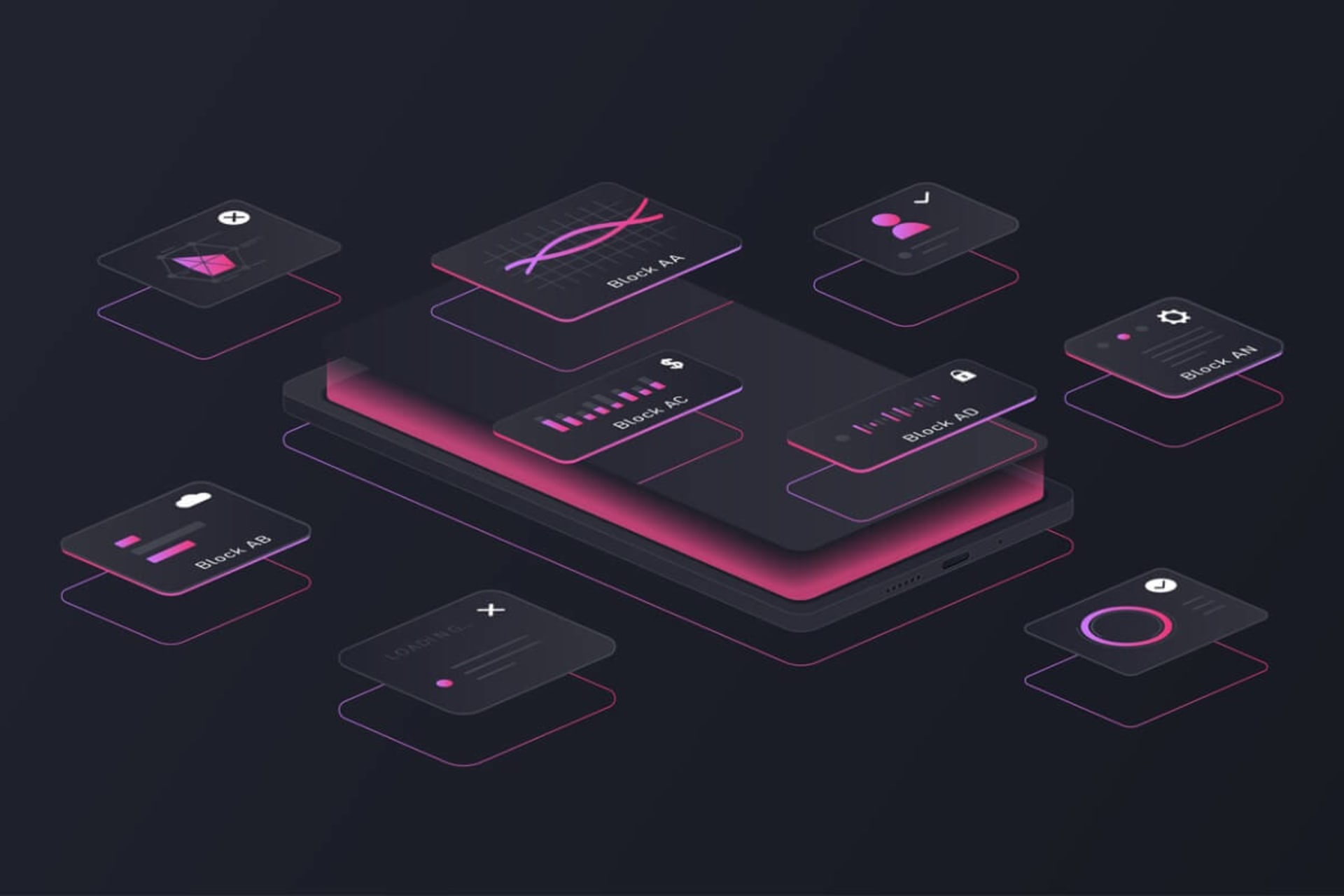As customers increasingly interact with companies through their online platforms, those companies are competing with others for views and market share. Thus, strategies that can help increase view and market share rates are becoming increasingly important. User experience (UX) and user interface (UI) are two strategies that have become more critical to website design.
UX refers to users’ overall impression when interacting with a company’s website, app, or other digital assets. Typically, the more seamless the interaction, the more positive the impression, and the more likely the user will return or take further steps along the customer journey. The mission for designers is to make the process from searching to purchasing as seamless and frustration-free as possible.
UI refers to the digital tools used to help that process along. It includes things like the placement of menu items and the design of buttons — all the little things that come together to create the environment in which users interact. UX and UI are constantly evolving, with new ideas sparking innovative methods and vice-versa. In the following sections, we explore some of the most interesting UX and UI design trends that will likely make their way to many companies’ websites, apps, and other digital assets in 2025.
Asymmetry
Designers are using asymmetric designs to stand out, giving viewers a different experience from the perfectly lined-up arrangements of the past. Like some of the other approaches mentioned in this article — including brutalism, bold colors, and nostalgia — asymmetry surprises viewers and delights them when used correctly. Such strategies serve the high-level goals of making websites memorable, engaging visitors, and giving them a reason to return.
Brutalism
Brutalism is the prioritization of function over form, focusing on simplicity and usability. It is a trend that has come around again after having been on the back burner for a while. The return includes using default browser fonts, gradients, contrasting colors, and an older style of graphics, illustrations, and photography. Essentially, it is a nod to the elements many will recall from the original internet.
Pairing well with nostalgia, mentioned elsewhere in this article, brutalism presents a less polished approach and shows things in a more realistic light. This trend is happening in the design of app functionality as well, as with the highly popular BeReal app, which invites users to stop what they’re doing at an unexpected time each day and take a photo of what they’re doing, as well as their own face. The following video highlights some examples of brutalism in action.
Gradient
Gradient — and related technique ombre — can add interest to otherwise plain images. It is useful within interfaces, backgrounds, and other design elements. Gradient, like the bold colors and brutalism mentioned elsewhere in this article, is a bolder choice that draws attention and communicates a fun attitude and happier times (perhaps in part as a response to the dreary mood of the pandemic years).
Personalization
Personalization tools within websites and apps give users the next level for viewing or shopping experiences. Such features include recommendations based on previous searches and purchases as well as their current location. For example, a retail app might ask users to enter the specific store location they usually visit and base results on it. A search term may return results that include whether the item is currently available in that store.
Some personalization options are more whimsical than functional. A recent Shakuro blog post states, “the Telegram messenger lets users change color theme, text size, and background and install custom language packs like the cat’s language.”
Nostalgia
No matter what generation you are in, it’s fun to sometimes revert to your formative years and the things that were happening during that time, including historical events, TV and movies, and music. For example, millennials relish anything from the 90s, while Gen X loves anything 80s-related.
Designers keep this in mind as they create interfaces that appeal to specific age groups. Additionally, designers are becoming bolder with their color choices and reverting to themes and patterns that were popular in the past, such as neon or bright candy-inspired hues.
Eco-design
This design element has to do with the hardware rather than the software, which is what most of the other items on this list cover. The purpose of eco-design is to create products that don’t generate waste. This is accomplished by making devices longer-lasting, so users don’t need to throw away old devices when they replace them with new ones.
This strategy may seem counterproductive because, of course, manufacturers want to sell more of their products. But the tendency for consumers, especially younger ones, to be very interested in the values of the companies they do business with cannot be overlooked.
Digital Wellbeing
As the online world evolves, we are becoming more aware of its negative impacts on physical and mental health. A study review cited by Time revealed that “average screen time for adults in the U.S. and other countries increased 60–80% from before the pandemic.” Like so many other things in the world, a healthy approach depends on our ability to be aware and set boundaries. However, the offending source can be adjusted as well. In the case of the digital world, more tools are becoming available to help users maintain their wellbeing.
For example, some apps offer timers to help users know how much time they spend on the platform. Instagram provides such tools, as well as features to help parents help their teens communicate only with people who don’t mean them harm and limit the time they spend. Another example is the Android operating system, which includes tools to help users understand how much time they spend on each app and on their phones generally.
Digital wellbeing can be achieved in many more ways, from timers that alert knowledge workers that it’s time to get up from their computer and stretch to calming screen colors that help soothe users throughout the day. Some apps are even designed to help with wellbeing, focusing on meditation, sleep, nutrition, and drinking enough water.
Handmade Graphics
Handmade graphics are a response to the overuse of stock images from services such as Canva and Adobe Stock. Such content may make design faster and easier, but it can also be problematic — sometimes even cringe-worthy — in how it represents certain groups of people, the sometimes-silly design elements, and the potential for a big mismatch with your brand.
On the other hand, handmade elements can be designed to support your brand perfectly and express the messages you want to send about people and themes. They can also add flair to a website or app, potentially drawing in viewers and customers and giving them a reason to return. The Shakuro post notes, “Such visuals create a solid bond with consumers based on emotional connection. The people will recognize the product just by glancing at the images as if the brand is their old friend.”
Microinteractions
Microinteractions are small but important events when customers use a website or app. One of the simplest examples is the Like button, introduced by Facebook and now a common element in many online environments.
Other examples include a scroll bar to show you how far into an article you are; the bouncing dots that appear when someone is texting you, so you know they are responding; a progress bar to show how far along a download load is; or a fun error page message that shows up when a website page you request is unable to load.
Such interactions provide a higher-quality UX by reassuring website and app users that their actions are having an effect and that something is happening. Designers are finding more creative ways to use them to enhance that experience.
Cross-Device UX
More customers are now moving between devices to use the same website. For example, a user may start a search on their favorite e-commerce platform while on their phone during a train ride to work and complete the transaction at their desk when they arrive. That means that to provide a smooth transition, designers are making sure customers get a seamless experience no matter what device they are using.
Cursor Design
Everyone is familiar with standard cursor design, such as the ubiquitous white arrow used to move around the screen and the familiar hourglass to show that a process is in progress. However, designers are using more interesting and whimsical cursor designs that complement the websites and brands they are used for. Designers may even create custom cursors to provide customers with a novel experience.
Accessibility
Accessibility is becoming more of a requirement. One prominent example is the European Union’s adoption of the European Accessibility Act, which requires digital environments to meet accessibility standards. These standards apply to computers, operating systems, smartphones, e-commerce sites, e-books, and banking services such as ATMs.
Specific features include voice search which enables a more hands-free experience, contrasting colors to help those with visual impairments, adjusting text size to be easiest to read for all viewers, and video subtitles to support those with hearing challenges.
All these features help the elderly and people with disabilities to access more products and services. Designers must familiarize themselves with the guidelines and ensure all designs comply.
Cards
Cards can be used in website design for a variety of purposes. They can include product previews, blog post teasers, videos, images, tips, and many other types of content. The flexibility of cards makes it easier to design and organize the information on a site.
Immersive Scrolling
Something as mundane as scrolling may not seem like a design element, but it definitely can be. Over the years, the way scrolling occurs has changed from a simple static movement, taking viewers through the content in a specified way, to a much more dynamic presentation that allows for exploration and moving through the website more intuitively.
With immersive scrolling, designers can showcase products in detail. Immersive scrolling is also referred to as scrollytelling when it displays content with a narrative focus. These presentations can involve animations and other dynamic elements against the backdrop of static images. This scrolling method is highly engaging and eye-catching, giving viewers a reason to return to a website. Designers are likely to continue to experiment with this method, but it’s only for some sites, so caution is warranted.
Dark Mode
Devices such as smartphones may have a dark mode setting, typically used at night to help users see more easily. Some simply prefer it over the standard light setting. At the same time, more apps are being designed with dark mode because it is easier on the eyes, causing less eye strain than light backgrounds. Twitter is one major platform that has picked up on this trend, and more designs are likely to include it in the coming year.
3D Imagery
3D images provide users with an interesting and interactive, more engaging experience than 2D images. Some 3D presentations provide the foundation for powerful storytelling and enable viewers to feel like they have interacted with objects in real life. But even just simple 3D supplements to static images can stand out and be more memorable. As with other design elements that really stand out, a little can go a long way, so designers should ensure they are supporting main messages and functionality rather than overwhelming them.
Mobile-first Design
In the past, designers developed websites on desktop or laptop computers and then moved on to create a mobile version. But, because mobile devices drive the majority of online traffic, designers should think about creating sites from a mobile-first perspective, then developing versions to accommodate other types of devices. Use of responsive design can help ensure that, no matter which device is being used, viewers get a similar high-quality experience.
VR
Many websites and apps are the perfect places to use virtual reality (VR) technology to help users have a higher-quality UX. While gaming is an obvious example of where this technology can be deployed, there are almost limitless uses for it in other realms as well. For example, realtors can use it to show homes to interested parties without them having to travel to the house location. Educators can use it to bring users into the historical periods they’re teaching about. And retailers can use it to show every fine detail of their products.
Augmented reality is a related technology that can also be highly useful. For example, a museum might create an app that gives visitors information about items as they approach them and guides them through the collection logically.
Biometric Access
While passwords have had an important role in the rise of the digital world, they are becoming more cumbersome. Many people use easily guessable passwords and repeat their use, two basic no-nos that make hackers’ jobs much easier. Password managers such as Dashlane can help but provide no security guarantee.
Passwords are also becoming less necessary as new solutions take their place. Biometrics include fingerprint and facial recognition, while technological alternatives include physical passkeys or authorization numbers sent to the user’s mobile device. Rather than being used as add-ons, these options are more frequently being baked into website and app designs.
Immersive Experience
Websites for companies with interesting products highlight them with immersive experiences that allow visitors to really get a feel for what those products are like. Car companies are a good example of this, with detailed presentations of every aspect of the vehicle, including the dashboard and engine areas. Large font sizes and large images contribute to the immersive approach.
UX and UI Choices Depend on the Target Market
As this list makes clear, good design in 2025 is all about the details and how every small element helps draw visitors in. But the key to success in doing so is audience awareness. For example, more showy elements such as bright colors and splashy immersive scrolling may appeal more to younger and more active viewers. At the same time, subtle tones and a more self-guided approach might be better for older target markets or those who prefer a calmer experience.
Similarly, handmade graphics, alternative cursor designs, and anti-design elements may excite some viewers but confuse others. But some elements are likely to appeal universally, and some may even go unnoticed consciously by users. For instance, microinteractions and personalization may not seem to some like design elements at all, but instead simply as expected functionality.
For the best outcomes and highest-quality UX, designers should be aware of the user perspective and be prepared to alter some elements based on feedback and usage results.







